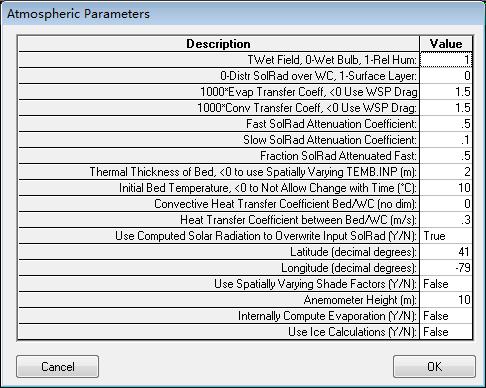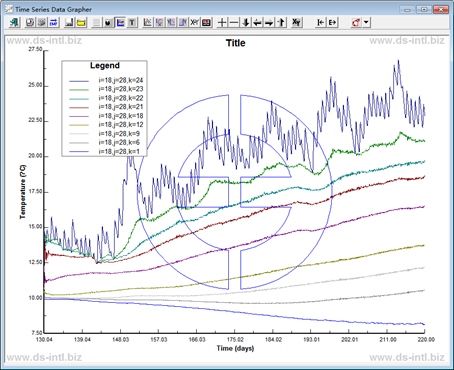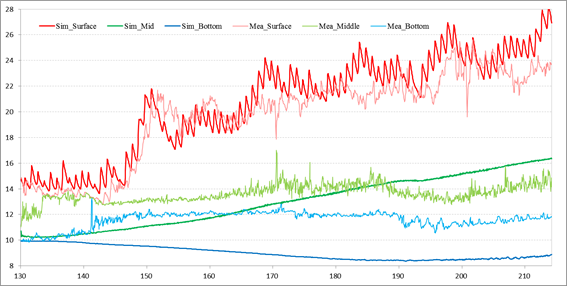Hi all, I have tried to implement a simple case study in a deep lake using EE 7.1 (Web version). I used the “Full heat balance” to calculate heat exchange with the configuration in the attached figure. The problem is that The recommend value of “Heat transfer coefficient Bed/WC” is 0.3. However, with I set it as 0.3, the model crash with hint of “forrt1: error (72): floating overflow”. Other configurations of this model include: KC = 24. Initial water temperature=10 (all layers). Aser.inp was obtained from measurement. Time step 5s. Thanks for your help. Huang Attached files 
Hi Huang,
Did you model run when you used any other values than 0.3 for "Heat transfer coefficient Bed/WC" ? Would it be possible to send your model to us ? Right now it is hard to diagnose what caused the model error. I don't think the error is caused by heat transfer coefficient. Also attach the actual error screen and post here so we have more idea of what's going on in the model. It's likely that there might be some problem in your initial condition but it's just a guess given we haven't had chance to look at your model.
Best,
Janesh Devkota
Hi Janesh, Thanks for your reply. I go a bit far during the past month with the trial version of EE 8. However, I still have two problems. (1) The simulation results showed that only the surface layer has a large temperature fluctuation. This is not true. How can I get a simulation result that has a larger temperature fluctuation rather than a nearly line (Fig1)? (2) The simulation results showed a clear daily fluctuation of surface water temperature. This did not agree with the measured water temperature (Fig2). How can I get a better agreement? Note: I have already play with several parameters (e.g., SWRATNF SWRATNS FSWRATF DABEDT TBEDIT HTBED1 HTBED2). But it doesn’t work. I can send you the model, if you have the interest and time to check it. Best regards, Jiacong Huang Attached files 

The parameters you are adjusting are the ones we would recommend. However, we would like to know more about the data you are using. Do you have hourly atmospheric data? Good measured solar radiation is essential for your model. Do you have measured cloud cover data? You will need this to prevent excessive cooling of the system from incorrect back radiation.